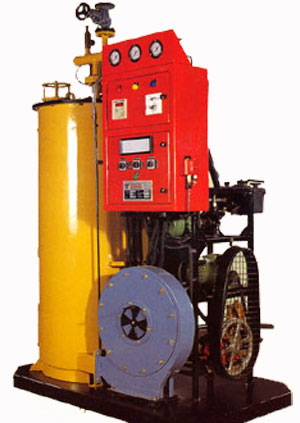
Home |
Client List |
Careers |
Contact Us |
Site Map |
| About Us | Machines | Plants & Projects | Services | Why Us? | News | More Links |
:: OUR PRODUCTS ::
Welcome to S.F. Engineering Works Greese Plants
Plants/ Grease Plant: Types Of Greases Basic Defination Current - Modified Definition of Grease is "A solid or semi solid product of dispersion of thickening agent in liquid lubricant. Other ingredients imparting special properties may be included”. |
||
Grease is a lubricant of higher initial viscosity than oil, consisting originally of a calcium, sodium or lithium soap jelly emulsified with mineral oil. Greases are typically used in areas where a continuous supply of oil cannot be retained, such as open bearings or gears. Grease is a fine dispersion of an oil-insoluble thickening agent - usually soap in a fluid lubricant which is generally mineral lubricating oil. The soap is made up of fatty acid, tallow or vegetable oil saponified with alkali which can be hydrated lime, caustic soda, lithium hydroxide or aluminum hydroxide. The lubricating oil component is refined base oil-naphthenic, of medium viscosity index, or cylinder oil stock. Structurally grease is a “water-in-oil” emulsion. Its appearance is smooth, mostly translucent, soft or hard. Properties essential for performance of grease are structural stability, lubricating quality, low and high temperature performance (which are provided by the selected lube oil base stock), where as properties such as water resistance, high temperature quality, resistance to break down through continuous use and ability of grease to stay in place are provided by the soap. Additives e.g. Graphite, modified clay, asphalt, oxidation and corrosion inhibitors, extreme pressure additives molybdenum disulphide etc. are used to impart specific properties as required by end application. Factors to be considered when selecting greases are the type of grease, which in turn depends on operating temperatures, water resistance, oxidation stability etc. The second factor, no less important, are the grease's characteristics, including viscosity and consistency. |
||
 |
Basic Types Of Grease
Metallic soaps + Lubricating Oils + Additives for imparting Special properties
Thickening Agent + Lubricating Fluid (Synthetic oils) + Additives for imparting Special properties The value of plastic lubricants has been recognized since very early times when animal fats were used for Axles and the like. In general any lubricating fluid can be gelled by means of a suitable thickness to form a lubricating Grease. In practice mineral oils are almost exclusively used. For soap type Greases mineral oils of relatively low viscosity index 60 are preferred since the greater solvency of the more aromatic oils for soaps makes manufacture easier and gives greases with lower soap contents and with better properties. Synthetic Fluids: Esters and silicones are used, only in greases for special applications, where cost is secondary to performance to meet low temperature and high temperature requirements; - 75ºC to + 320ºC. |
|
The Soaps used are the metallic salts of long chain fatty acids derived from wide range of natural fatty materials. Soaps are mainly produced by specifying the fat or fatty acid with appropriate alkali in the presence of oil. In some cases pre-formed soaps are used, such as aluminium stearate, lithium sterate etc. Non Soap – Thickners may be inorganic e.g. silica or clay or organic with a very high melting point . e.g. terephthalamates, arylureas (these may be either pre-formed or formed in situ) and the dye stuffs, indanthrene and phthalscyanine. They need to be oleophilic and this characteristic may be imparted either in the thickner formulation (i.e. by including a long chain hydrocarbon chain or surface esterification ) or by coating the particle surfaces with organic cations. In the latter case about 75 percent of the particle surface is covered, which gives the desired effect without affecting inter –particle forces too much. Pre-treated clays (i.e. coated and dried) need aids to facilitate dispersion in oil. These dispersion aids are low molecular weight polar organic compounds such as methanol, acetone, diacetone Alcohol and propylene Carbonate. A satisfactory Grease for a given application is expected to:
Soap Greases consist of dispersions of soap fibres in oil in concentrations mostly in the range 5 to 22%. By weight sometimes solid block greases contain 50 to 40% of soap. The thickeners in non-soap greases are usually particulate rather than fibrous in nature and in this case the structure is maintained by 3 dimensional linkages due to very short range inter –particle forces (Vander waal’s forces). These linkages are readily broken and re-formed. |
||